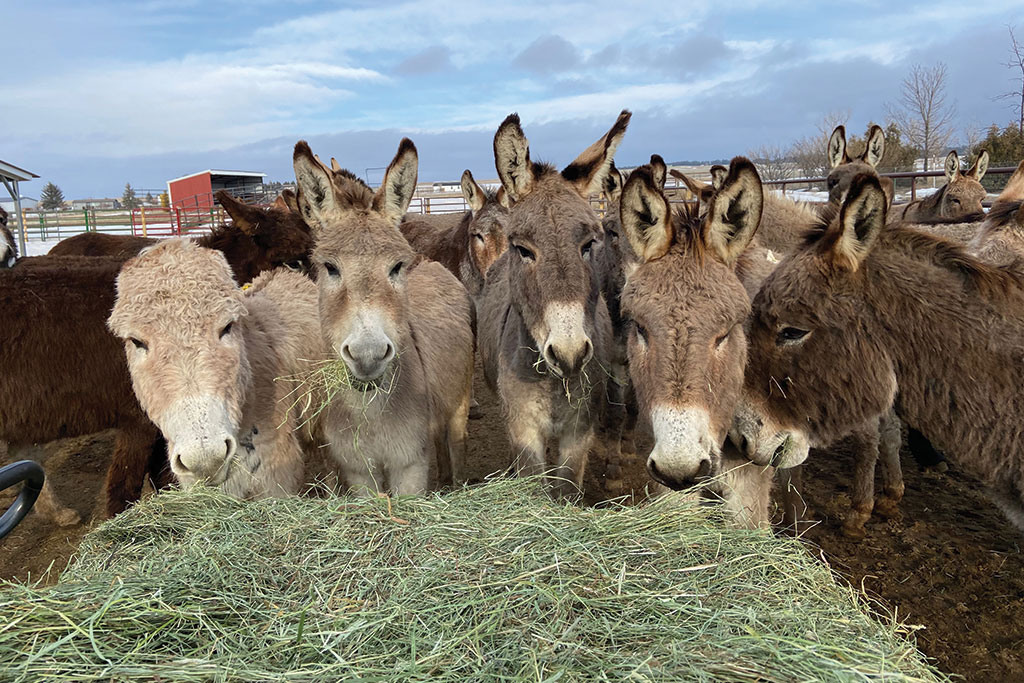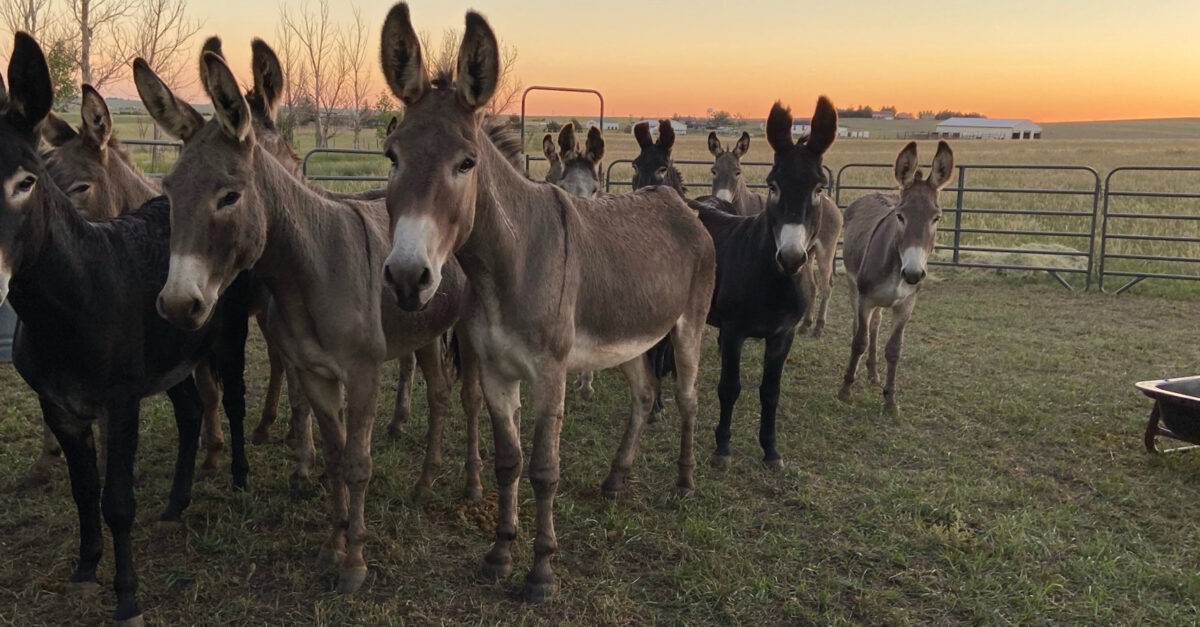Lifestyle
Interview with Kim Welk
Photography courtesy of Burro Base Camp
Lifestyle Most people might not assume that burros (also known as donkeys) are intelligent, caring, and sensitive by nature—but Kim Welk of Burro Base Camp in Kiowa, Colorado, knows better.
Here she reveals how much love and affection these creatures can provide.
What was your life like before caring for burros?
I was an athlete and played and coached competitive soccer in high school and college. Once my kids were born, they didn’t want anything to do with soccer, so I transitioned to leading the running club at their elementary school. My husband and I started running and eventually got involved with marathons and triathlons, including IRONMAN races.
One of my husband Mike’s training partners invited him to run with burros in an event called Pack Burro Racing. He learned this race has a long history in Colorado and was excited to try it out. He was hooked.
For the first few years, he rented a burro because we lived in suburbia. Eventually, we decided as a family to move to the country and establish a farm. We adopted our first burro shortly thereafter.

When did you become part of Burro Base Camp?
Our paths crossed with Burro Base Camp and its founder, Nicki Creasey, in 2019 when we adopted our second burro, Minnie. We then adopted Mazie, our third, from Burro Base Camp too.
These burros from Burro Base Camp were part of the Bureau of Land Management’s [BLM’s] Wild Horse and Burro program. Together with BLM, Nicki would work with previously wild burros, gentling them and teaching them to trust and interact with people. She would also teach the burros valuable skills to help them succeed in domestic life, including leading and picking up their feet.
In 2021, Nicki found out that her family was relocating to Florida. She made the difficult decision to shut down her business, thinking there was no way for it to run without her. She had built such an amazing community, helping over 250 burros. We were just heartbroken to think of it going away.
By this point, our family had moved to a larger farm in Kiowa. We had five burros and had started to homestead. A big part of my and Mike’s careers involved building businesses, so we talked to Nicki about the opportunity to keep Burro Base Camp open, and the transition to our property occurred shortly after.
Where do most of the burros you take in come from?
This transition occurred right at the end of COVID, which was interesting because during the pandemic, most of the program’s basic operations ceased. We found ourselves with more adopters than burros available from BLM. We now find burros in other places, such as online marketplaces and auctions. I have feet on the ground in many places who are able to transport the burros to us. We also found a need to assist people who are moving and not able to care for their burros.
We currently have fifty burros we’re caring for, but that number is always changing.

Do they need a lot of work to rehabilitate?
Many of the burros we bring in were well cared for, but they need a little fine-tuning. We trim their feet and vet them as needed upon their arrival. Once settled in, we’ll refresh their skills so we can prepare them for their new homes. Some of the burros have had more negative experiences with humans; we spend a lot of time trying to gain their trust and teach them that people are OK.
We use the word “touch” to signal that we’re going to touch them, and if they let us put even the end of a fingernail on them, they’ll get rewarded. It’s a slow process. Everything we do is at the burros’ own pace and comfort level.
What does a typical day of caring for dozens of burros look like?
Our day starts very early. My husband is a firefighter, so before he leaves for his shift, he does all the morning feedings and the first round of chores—all by the light of his headlamp. When I get up and get ready for the day, I respond to emails and requests to join our Facebook group, supporting adopters and burros as they transition.
Once the inside work is under control, I head out to the corrals, fill the water tanks, and make sure everyone has what they need for the day. I’ll then move into training and working with the burros, or I’ll travel to deliver and pick up burros and to meet and support our adopted burros and their adopters. This includes many farrier visits and outside care.
Most days, the burros start hee-hawing at about 3:30 a.m., and we wake up and do it all again.
How would you describe the human-burro connection?
The cliché is that burros are stubborn and stupid, but the truth is that they are probably some of the smartest animals alive. They observe you and, once they trust you, are willing to show you all their cards. They’re also incredibly loving, caring, and emotional.
One of our adopters had a burro who lost his horse companion. The burro went through a period of mourning, just as a human would in losing his partner. We were able to place another burro in their home to provide support through the transition.

Is there a burro-rehab success story that stands out to you?
I have so many, but the most rewarding one so far was when we brought in a baby we him Crackers. Our vet aged him at about eight months old, but we had no idea when he was separated from his mom. His immune system was very weak, making him more susceptible to illness.
The rehab process required a lot of learning on our part since we had never taken in a baby burro before. He quickly became my little buddy. Crackers and his brother, Oyster, eventually got adopted. Fortunately, his adopter sends me updates all the time. Crackers is finally starting to grow some hair back and putting on weight, which is beautiful to see.
How has the experience of running a burro nonprofit changed your life?
Typically, when you’re building a business and trying to make it successful, you have the choice every day of whether or not you want to do the work or take the day off. But when you lie in bed in the morning with fifty burros outside, you don’t have that choice. We just hit our two-year mark and have successfully placed 109 burros. Our burros are first in everything we do. The rest of our lives takes a step back behind the burros.
Being 100 percent volunteer-and donor-driven, we are grateful for all the support we receive. We couldn’t do it without our incredible community.
For more info, visit burrobasecamp.com



